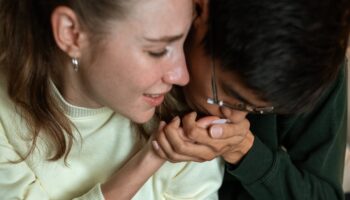Introduction
Sexual orientation is a deeply personal aspect of human identity that encompasses a range of experiences and attractions. Two distinct sexual orientations that contribute to the diverse spectrum of human relationships are asexuality and bisexuality. We will explore what it means to identify as asexual or bisexual, highlighting the nuances, misconceptions, and experiences associated with each orientation.
Asexuality: Embracing the Spectrum of Attraction
Asexuality is a sexual orientation characterized by a lack of sexual attraction or a low Level of Interest in sexual activities. Individuals who identify as asexual may still experience romantic, emotional, and Platonic attractions, But they do not Experience the same level of sexual desire commonly associated with other sexual orientations.
It’s important to recognize that asexuality is not a lack of sexual functioning or a medical condition to be “cured.” It is a valid and legitimate aspect of human diversity, and those who identify as asexual may experience a wide range of feelings, connections, and relationships that fulfill their emotional needs without a focus on sexual intimacy.
Bisexuality: Embracing Attraction Beyond Gender
Bisexuality is a sexual orientation characterized by the capacity to experience attraction to individuals of more than one gender. Bisexual individuals are attracted to people of their gender and other genders. It’s important to note that bisexuality does not necessarily mean equal attraction to all genders; Attractions can be fluid and vary from person to person.
Misconceptions and Stereotypes
Both asexuality and bisexuality often face misconceptions and stereotypes that can perpetuate misunderstanding and stigma. For asexual individuals, Misconceptions may include thinking that they are repressed, have not yet experienced sexual attraction, or that they are simply not interested in sex due to trauma. For bisexual individuals, stereotypes can involve assumptions that they are inherently promiscuous, confused about their identity, or “just experimenting.”
Challenges and Experiences
Both asexual and bisexual individuals may encounter challenges related to their sexual orientations. Asexual individuals might face pressure to conform to societal norms, deal with the erasure of their identity, or navigate romantic relationships where partners may have differing levels of sexual desire. Bisexual individuals might experience invalidation of their orientation, difficulties in coming out due to misunderstandings, and even discrimination within heterosexual and LGBTQ+ communities.
Celebrating Diversity and Understanding
Promoting inclusivity and understanding is essential for fostering a supportive environment for people of all sexual orientations. Recognizing and respecting the identities and experiences of asexual and bisexual individuals contributes to a more inclusive society where everyone can live authentically and without fear of judgment.
Conclusion
Asexuality and bisexuality are integral Parts of the diverse tapestry of human sexual orientations. Each orientation reflects the complexity and uniqueness of individual experiences, feelings, and attractions. By acknowledging and respecting the identities of asexual and bisexual individuals, we contribute to a world that celebrates diversity, fosters empathy, and promotes acceptance for all.
- THE EVOLUTION OF PLASTIC SURGERY - 17 June 2024
- CHOOSE THE RIGHT PERSONAL INJURY LAW FIRM IN CHARLOTTE NORTH CAROLINA - 16 June 2024
- Email UX optimization, offering actionable insights - 16 June 2024






1 Comment